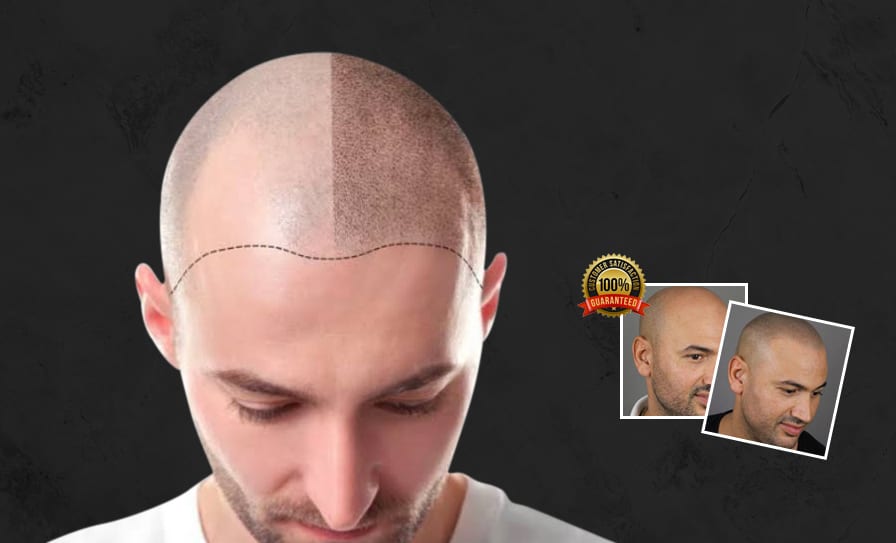
Table of Contents
Table of Contents
As we age, hair loss can be caused by hormones, genetics, food, or stress. Luckily, there are solutions available, including hair transplants and scalp micropigmentation. Hair transplants involve surgery where hair is taken from a donor site and transplanted onto balding spots. In contrast, scalp micropigmentation is a hairline tattoo that creates the appearance of hair follicles without surgery.
While hair transplants offer a permanent solution, scalp micropigmentation is a safer and less invasive alternative. Both options can provide natural-looking results for individuals with minimal hair loss or thinning hair.
Depending on the kind and amount of scarring, hair transplants can be done using either follicular unit transplantation or follicular unit extraction techniques. Choosing between hair transplant surgery and scalp micropigmentation depends on personal preference, budget, and the best solution for each individual’s hair loss.
Scalp micropigmentation is a nonsurgical treatment or procedure that uses fine micro needles to insert natural pigments into the scalp. This is an ideal procedure for people with receding hairlines, bald spots, patches, and scars from the hair transplant procedure.
It restores the look of fuller hair by creating and replicating the appearance of tiny hair follicles, making it look fuller.
The practitioner would use pigmentation and proper equipment to copy the hair follicles and colour of the natural hair. It gives an illusion of real and thicker hair to the thinning or bald areas.
Note that this is a non-invasive and nonsurgical treatment; this should be noted in case you do not want to go through the surgical means of hair restoration.
Scalp micropigmentation should be touched up every 3 to 6 years to maintain its natural appearance. It could also be called Scalp Micro Pigmentation, hair tattoo, hair pigmentation, head tattoo or scalp tattoo.
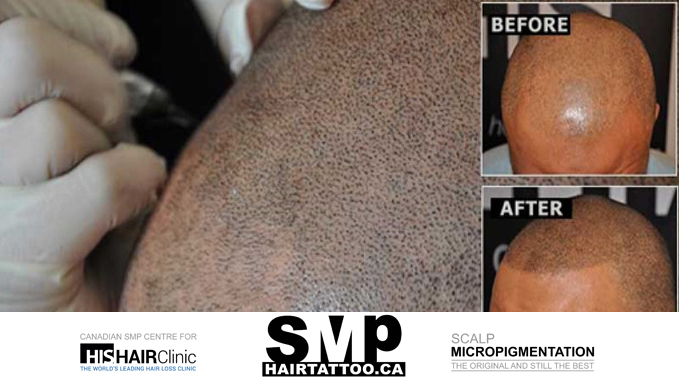
This hair tattoo method is non-surgical and non-invasive, making it a more comfortable option for some people. It is 100% effective and replicates the look of real hair, often with no noticeable difference.
Maintenance is minimal, with only a touch-up needed every 3 to 6 years. It is budget-friendly and can help conceal visible scars on the head. It can also create the look of a full head of hair for those experiencing thinning or hair loss.
Depending on the practitioner’s experience and how much of the scalp needs to be covered, the cost range could be between $2000 and $4000.
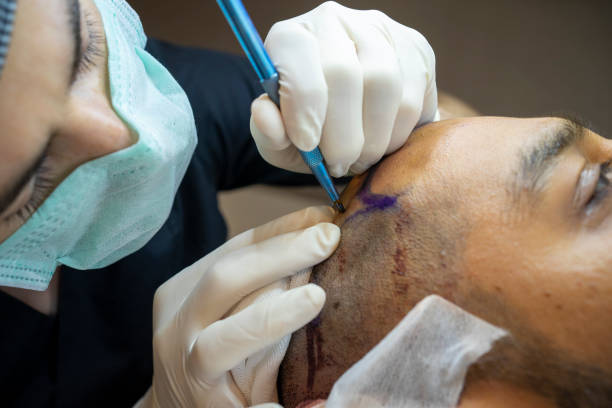
In contrast to scalp micropigmentation, a hair transplant involves surgically relocating existing hair to address thinning or bald areas on the head, done by a dermatologist or plastic surgeon. Meanwhile, a hair tattoo provides the appearance of hair.This procedure takes place in the medical /doctor’s office after the back of the head has been injected with a numbing medicine to reduce the feeling of pain. However, some patients still complain of pain and discomfort during the procedure. There are two techniques for transplanting hair, and they include:
This hair transplant method, called FUT, involves removing a strip of scalp skin from the back of the head. The surgeon then divides the removed scalp into smaller units to use as grafts for the transplant, depending on factors such as the size of the treatment area and the type and colour of the patient’s hair.
In FUE, hair follicles are cut from the back of the head using punch incisions and then transplanted to the balding area using tiny holes.
The operation lasts 4 to 8 hours, with stitches needing removal after a few days. Further sessions might be required to obtain the preferred outcome.
Hair transplant is a successful and cost-effective procedure that improves a person’s appearance and eliminates baldness, giving them more confidence in their looks. It has a high success rate and requires low maintenance, giving it a natural look.
Hair transplant procedures’ potential risks and drawbacks include inflammation or infection of the scalp or hair follicles, bleeding, scalp swelling, discomfort due to itching, scarring, temporary hair loss, insufficient donor hair, and visible scars that prevent keeping hair short.
The price of a hair transplant may fluctuate based on the quantity of hair to be transplanted and the surgeon who performs the procedure. It typically ranges between $5,000 and $20,000. It’s important to research and understand the different procedures and consult a plastic surgeon or dermatologist to choose the best option.
| Scalp micropigmentation | Hair transplant |
| This method is a nonsurgical treatment. | A hair transplant requires surgery to transfer and plant the hair. |
| This procedure is less invasive. | It is a more invasive method that may be uncomfortable for some people. |
| This treatment is more budget-friendly. | A hair transplant is more expensive. |
| This uses ink to replicate the appearance of hair on the head. | This transfers hair from one part of the head with hair to a part that does not have it. |
| No donor’s hair is required. | Not enough donor hair can result in unsatisfactory results. |
| Immediate results in a few weeks | Prolonged healing time and many months for the hair to regrow. |
Hair loss can arise for various reasons, including hormones, genetics, diet, and stress. The main solutions available for hair loss are hair transplants and scalp micropigmentation.
Scalp micropigmentation (often called SMP, hair tattoo, or hair pigmentation) is a nonsurgical procedure where natural pigments are deposited into the scalp using fine micro needles. This simulates the look of small hair follicles, offering the impression of thicker hair, making it beneficial for individuals with thinning hairlines, bald spots, or scarring from previous hair surgeries.
While scalp micropigmentation offers the appearance of hair using tattooing techniques, a hair transplant involves a surgical process where actual hair is moved from a donor site to balding areas. Hair transplantation involves two methods: Follicular Unit Transplantation (FUT) and Follicular Unit Extraction (FUE).
Absolutely! In the FUT method, a section of scalp skin is taken from the rear of the head and broken down into smaller segments for grafting purposes. In contrast, FUE entails the removal of single hair follicles, which are then transplanted to the target area. This process requires tiny incisions and might need several sessions to achieve the desired outcome.
Scalp micropigmentation is a non-invasive and nonsurgical procedure, making it a comfortable option for many. It replicates the look of real hair very effectively, often indistinguishably. Maintenance is simple, requiring touch-ups every 3 to 6 years. It’s also cost-effective and can hide scars or other imperfections on the scalp.
Generally, scalp micropigmentation is more budget-friendly, ranging from \$2000 to \$4000, depending on the practitioner and coverage needed. In contrast, hair transplant costs can vary between $5,000 and $20,000, depending on the amount of hair to be transplanted and the surgeon’s expertise.
Some potential risks include scalp inflammation, infection, bleeding, swelling, discomfort, itching, scarring, temporary hair loss, insufficient donor hair, and visible scars that might hinder the possibility of keeping hair short in the future.
Scalp micropigmentation provides immediate results within a few weeks, replicating the appearance of hair on the scalp. Hair transplants, being more invasive, take longer to heal, and it might be several months before the transplanted hair begins to grow.
Absolutely! Combining SMP with hair transplant surgery can offer enhanced results. For instance, scalp micropigmentation can create the illusion of density in areas where hair transplant surgery was undertaken, ensuring a fuller and more natural appearance.
Both treatments have their advantages. The choice boils down to individual preferences, stage of hair loss, and budget considerations. While SMP is non-invasive and relatively more affordable, hair transplant offers natural results, especially for those with progressive hair loss. Consulting a qualified practitioner and understanding both procedures in-depth will aid in making an informed decision.
Hair loss affects millions worldwide, and various treatment options are available to combat the condition. Scalp micropigmentation (SMP) and hair transplant surgery are two leading treatments. Each offers promising outcomes, but there are crucial distinctions to mull over when picking the one best suited for you. Scalp micropigmentation entails introducing pigments into the scalp to mimic hair follicles, rendering the look of closely shaved or denser hair. It’s a procedure with minimal invasiveness, no required recovery period, and promises enduring results with little upkeep. If budget is a concern, scalp micropigmentation tends to be more economically friendly than hair transplant surgery.
During a hair transplant, hair follicles are harvested from a donor area and then implanted into areas of the scalp experiencing hair loss or thinning. The procedure is more invasive than SMP and requires a longer recovery time. However, hair transplant surgery can provide more natural-looking results and is a better option for those with progressive hair loss.
Ultimately, the decision between scalp micropigmentation and hair transplant surgery comes from personal preference and individual circumstances. For example, those with early-stage hair loss or looking for a more budget-friendly option may prefer SMP, while those with advanced hair loss may find hair transplant surgery a better solution.
It’s important to note that SMP and hair transplant surgery can also be combined to achieve optimal results. For instance, SMP can simulate a denser look in regions where a hair transplant surgery occurs. In conclusion, scalp micropigmentation and hair transplant surgery are practical options for treating hair loss. Understanding the differences between the two treatments and consulting with a qualified practitioner can help you decide which choice is right for you.
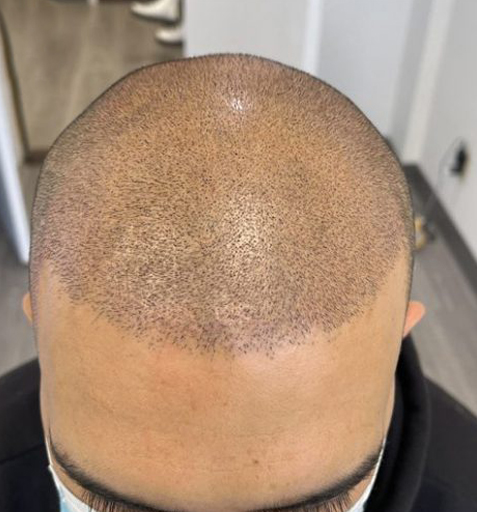

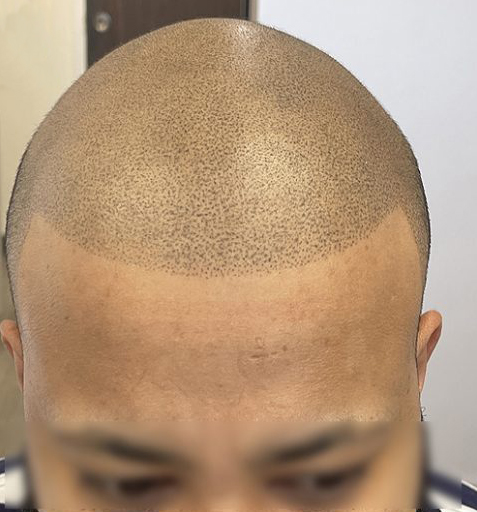



© 2024 HAIRTATTOO.CA | Scalp Micropigmentation & Trichology Centre
